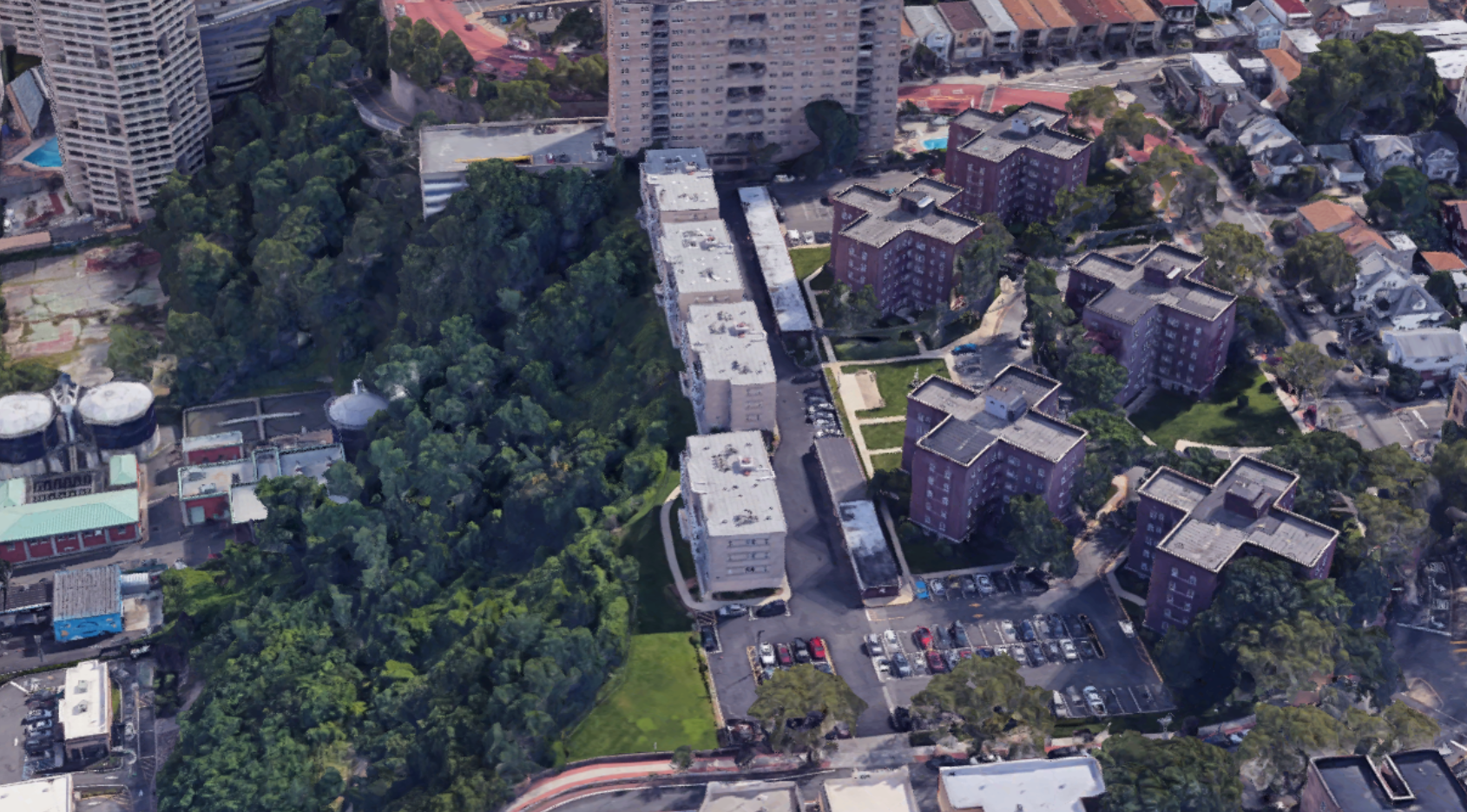Physical Address
304 North Cardinal St.
Dorchester Center, MA 02124
Physical Address
304 North Cardinal St.
Dorchester Center, MA 02124

As zoning has become more restrictive over time, the need for “safety valve” mechanisms—which give developers flexibility within standard zoning rules—has grown exponentially.
U.S. zoning officially has two such regulatory relief mechanisms: variances and special permits. Variances generally provide flexibility on bulk rules (e.g. setbacks, lot sizes) in exceptional cases where following the rules would entail “undue hardship.” Special permits (also called “conditional use permits”) generally provide flexibility on use rules in cases where otherwise undesirable uses may be appropriate or where their impacts can be mitigated.
 An extreme grade change is one reason why a lot might receive a variance, as enforcing the standard setback rules could make development impossible.
An extreme grade change is one reason why a lot might receive a variance, as enforcing the standard setback rules could make development impossible.
 Parking garages commonly require special use permits, since they can generate large negative externalities if poorly designed. Common conditions for permit approval include landscaping or siting the entrance in a way that minimizes congestion. (Wikipedia/Steve Morgan)
Parking garages commonly require special use permits, since they can generate large negative externalities if poorly designed. Common conditions for permit approval include landscaping or siting the entrance in a way that minimizes congestion. (Wikipedia/Steve Morgan)
In addition to these traditional, formal options, there’s a third, informal relief mechanism: spot zoning. This is the practice of changing the zoning map for an individual lot, redistricting it into another existing zone. Spot zonings are typically administered where the present zoning is unreasonable, but the conditions needed for a variance, special permit, or a full neighborhood rezoning aren’t. In many states, spot zonings are technically illegal. The thinking is that they are arbitrary in that they treat similarly situated lots differently. But in practice, many planning offices tolerate them, usually bundling in a few nearby similarly situated lots to avoid legal challenge.
 An example of a spot zoning.
An example of a spot zoning.
Variances, special permits, and spot zonings are generally considered to be the standard outlets for relief from zoning. But there’s a fourth mechanism that, to my knowledge, hasn’t been recognized: let’s call it the “spot text amendment.” Like spot zonings, spot text amendments change the rules for either a specific site or a narrowly targeted set of sites. Unlike spot zonings, which amend the zoning map—which assigns every lot to a zoning district—to the benefit of a specific lot, spot text amendments change the zoning text (also known as the “ordinance” or “code”)—which sets out the regulations for each zoning district—to the benefit of a specific lot or subset of lots.
Since the zoning text is in theory meant to apply fairly to all lots, spot text amendments are often characterized by extreme and unusual qualifiers, such that they practically only apply to a handful of specific lots. Here’s an example:

For context, this is a from a section of the text which says that demolition permits for lots in a particular overlay district will only be administered with a special permit. This line, tacked on at the end of the section, exempts lots with a very specific zoning designation and lot size, built within an unusual 19-year time frame. Do you see what is going on here? The drafters likely had in mind either one specific lot or a handful of lots, which they were trying to exempt from the standard rules; that is to say, it’s a spot text amendment.
Once you know what to look for, you can likely go find multiple spot text amendments in every chapter of your local zoning text. In isolation, any given spot text amendment may make sense. For all I know, this particular demolition permit exception made a lot of sense! But in the aggregate, they form a confusing mess that shares many of the issues of spot zonings and are arguably worse in key ways.
Like spot zonings, spot text amendments undermine the rule of law. What do I mean by that? In theory, zoning is supposed to set out a standard set of rules for similarly situated lots, with a general focus on restricting nuisances. When a spot text amendment, like a spot rezoning, allows ad hoc exceptions to these rules, planners are essentially admitting that these rules are either not universally applicable within the relevant districts or do not produce a nuisance in all cases. This undermines the basis zoning and strips away its major selling point: predictability.
But spot text amendments are arguably worse, inasmuch as they undermine the intelligibility of the zoning text. Say what you will about the aesthetics a messy zoning map; even an egregious spot zoning will not undermine the ability of a local resident or developer to pull up the map and find the applicable zoning district for her lot. The same can’t be said of a spot text amendment. Each spot text amendment makes the text more confusing and inaccessible.
Take the C8-4 example above: when I stumbled upon it, even as a professional planner, it took me a moment to sort out what exactly was going on. Now imagine that you’re a local resident or business owner, for whom zoning is already hard to comprehend. Lard up your zoning text with a few dozen spot text amendment and you practically need a land-use attorney to understand the rules regulating how you can and can’t use your lot, making the text inherently exclusionary. That’s not how the law—to say nothing of planning—should work.
As bad as spot text amendments are, the root problem here is that we expect zoning to do too much. Now more than ever, zoning attempts to regulate the minute detail of urban development, resulting in overly detailed rules that don’t make sense in a host of situations. This forces run-of-the-mill projects to pursue informal regulatory relief, which in turn makes zoning even more obtuse and inaccessible. It’s a vicious cycle that won’t end unless we think seriously about the appropriate role of land-use regulation. In a system of universal rules, narrowly tailored to address clear nuisances, the need for spot text amendments would evaporate.